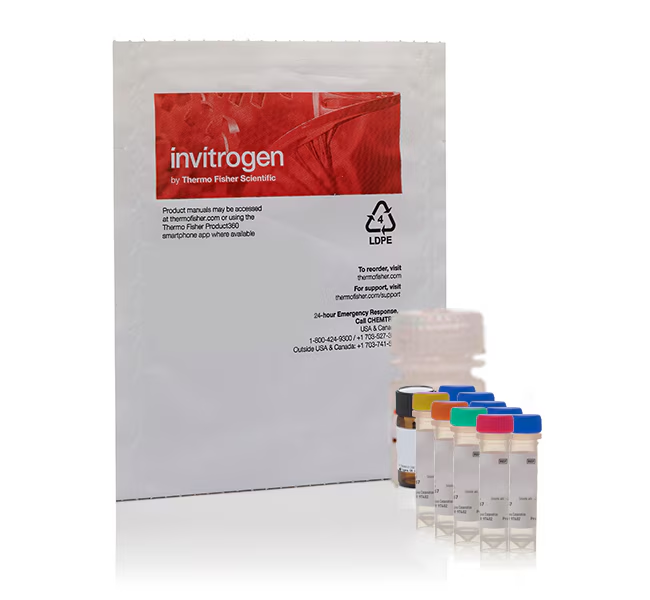
The Amplex™ Red Glucose/Glucose Oxidase Assay Kit provides a sensitive and simple method for detecting d-glucose or glucose oxidase using a fluorescence microplate reader or fluorometer.
See our complete line of Fluorescence Microplate assays.
• Detect concentrations as low as 3 μM d-glucose or 0.05 mU/mL of glucose oxidase
• Format allows for multiple time point measurements
• Designed for minimal autofluorescence interference
The Amplex™ Red reagent (10-acetyl-3,7-dihydroxyphenoxazine) is a colorless, stable, and extremely versatile peroxidase substrate. Because peroxidase- and glucose oxidase-mediated reactions can be coupled, it is possible to measure glucose oxidase activity or the release of glucose by any glucosidase enzyme—for instance, β-glucosidase and glucocerebrosidase—in either a continuous or discontinuous assay. Because of the ability to couple reactions, this assay has been demonstrated to be useful for the quantification of glucose levels in foods, fermentation media, and bodily fluids.
In the assay, glucose oxidase reacts with d-glucose to form d-gluconolactone and hydrogen peroxide. In the presence of horseradish peroxidase (HRP), hydrogen peroxide then reacts with the Amplex™ Red reagent in a 1:1 stoichiometric ratio to generate the red-fluorescent product resorufin.
Because resorufin has absorption and fluorescence emission maxima of approximately 571 nm and 585 nm, respectively, there is little interference from autofluorescence in most biological samples.
Use Amplex™ Red Assays for a Broad Range of Investigations
A wide variety of validated Amplex™ Red assays are available for studying cell signaling and lipids, neurobiology, inflammation and immune function, and metabolism. We also offer Amplex™ UltraRed Reagent (Cat. No. A36006), a second-generation reagent providing greater sensitivity and brighter fluorescence, and the Amplex™ Red/UltraRed Stop Reagent (Cat. No. A33855). The Amplex™ Red/UltraRed Stop Reagent provides convenience and control by allowing the fluorescence signal-generating reaction to be terminated at a user-determined time point. After addition of the stop reagent, the fluorescence signal remains stable for at least three hours. Custom assay design and packaging are also available.
| Code | Description |
|---|---|
| A22189 | Catalog Number: A22189 |

